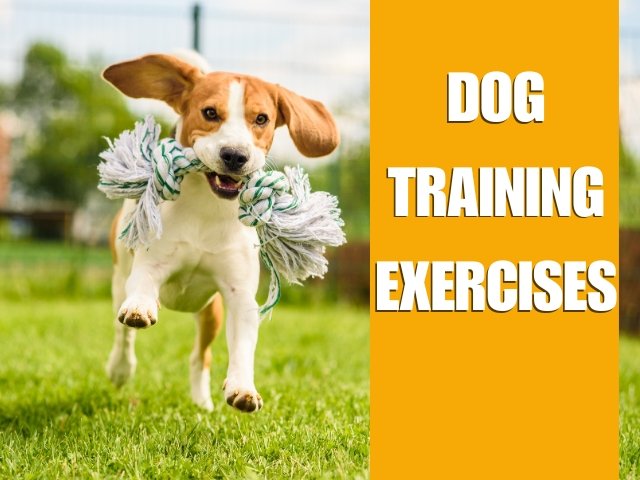Responsible dog ownership includes training as one of its most important parts. It not only ensures that your pet follows basic commands but also supports emotional, physical, and behavioral development. You should include fundamental dog training exercises in your dog’s daily routine because they can have a significant impact on their ability to learn, follow directions, and adjust to new conditions. These are not merely teachings; they are the foundation of good communication, a means of improving your marriage, and a more meaningful partner throughout your life. Getting the right dog information can help you better understand how to train your dog and why they behave a certain way.
The Role of Training in Canine Behavior
Dogs, by nature, are social animals that thrive in structured environments. Without proper training, dogs may develop undesirable behaviors such as barking, chewing, digging, or aggression. Training helps prevent these issues by setting boundaries and expectations.
Early training, especially in puppies, plays a major role in shaping their personality. Through guided exercises, dogs learn to interact with humans and other pets in a respectful and safe manner. Even adult dogs benefit from training—it keeps their mind active, reduces stress, and enhances their quality of life.
Training focuses on patience, leadership, and positive reinforcement rather than dominance. The basis for more complex exercises and improved general control in a variety of circumstances is laid by basic obedience commands like sit, remain, or come.
Advantages of Dog Training Activities
Training a dog is more than just teaching them tricks. For your pet, it provides some important advantages:
Better Communication:
Since dogs don’t understand our language, training helps them grasp our expectations by establishing a common vocabulary.
Mental Stimulation:
Dogs require mental stimulation, just like people do. Training activities prevent boredom and keep their minds active.
Socialization:
During training, your dog will frequently interact with both people and other dogs, which will help them behave better in public.
Physical Activity:
Your dog’s physical health and prevention of obesity are enhanced by the activity that many training routines need.
Developing Confidence:
Teaching your dog new abilities increases their self-confidence, particularly in rescue or anxious dogs.
Incorporating dog training exercises into daily routines helps create consistency and predictability, which are crucial for your pet’s development and overall behavior.
Types of Dog Training Exercises
There are different levels of training exercises depending on your dog’s age, experience, and temperament. Training exercises vary in difficulty based on your dog’s temperament, age, and level of expertise. These are ideal for novices and contain commands like:
- Sit: Teach your dog to maintain composure and focus.
- Remain: Promotes self-control.
- Come: Vital for security, particularly in public spaces.
- Down: Promotes your dog’s calmness and relaxation.
- Leave it: Keeps your dog from ingesting dangerous items.
To make sure your dog links training with rewards, these core exercises should be taught using positive reinforcement, which includes affection, praise, and treats.
Advanced and Intermediate Instruction
You can progress to more difficult commands once your dog has grasped the fundamentals, such as:
Heel:
Calmly following you while wearing a leash.
Go to place:
Telling your dog to sit or lie down at a certain location.
Waiting at doors:
It teaches patience and stops people from running away.
Fetch and drop:
This promotes concentration, retrieval abilities, and command-based release.
You can start increasing the difficulty by changing the surroundings or adding distractions as your dog gets better. This improves your dog’s reaction time in a variety of situations.
Enrichment-Based Exercises
These exercises combine training with fun and stimulation:
- Agility training: Using tunnels, ramps, and poles.
- Puzzle games: Toys that reward your dog for solving a challenge.
- Scent work: Hiding treats or toys and encouraging your dog to find them using their nose.
These not only improve obedience but also reduce stress, especially for high-energy or working breeds.
Best Practices for Successful Training
To get the most out of your dog training efforts, follow these best practices:
Keep Sessions Short:
5 to 10 minutes per session is ideal, especially for puppies.
Maintain Consistency:
Stick to the same commands and rewards during each session.
Practice Patience:
Every dog learns at its own pace—stay calm and encouraging.
Train in Different Settings:
Practice in parks, indoors, and around other people or animals to build adaptability.
Use High-Value Rewards:
Find treats or toys your dog loves to boost motivation.
End on a Positive Note:
Finish every session with success to build enthusiasm for the next one.
Midway through your journey, remember that these exercises aren’t about perfection—they’re about progress. Even small improvements should be celebrated, as they contribute to your pet’s growth and happiness.
Common Training Mistakes to Avoid
Training is a process, and mistakes can happen. Avoid these common pitfalls:
- Inconsistency: Giving mixed signals confuses your dog.
- Overtraining: Too much repetition can lead to boredom or resistance.
- Negative Reinforcement: Yelling or punishment can harm trust.
- Skipping Socialization: Dogs need exposure to various environments and people.
- Expecting Instant Results: Training takes time and persistence.
Addressing these mistakes early on will lead to a smoother and more enjoyable experience for both you and your dog.
Conclusion
Dog training isn’t just about obedience—it’s a critical part of your dog’s development and well-being. From basic commands to advanced enrichment routines, training helps your dog become more confident, focused, and emotionally balanced. Regular dog training exercises not only prevent behavioral issues but also improve your relationship with your pet, making them a happier and healthier companion.


